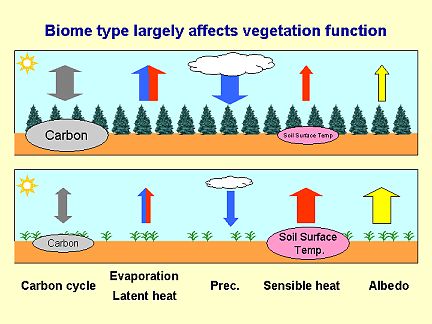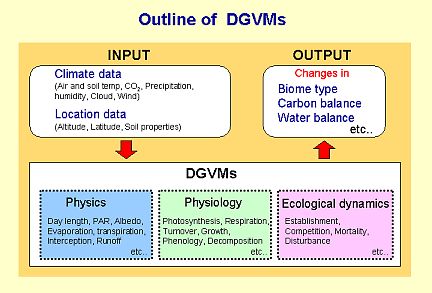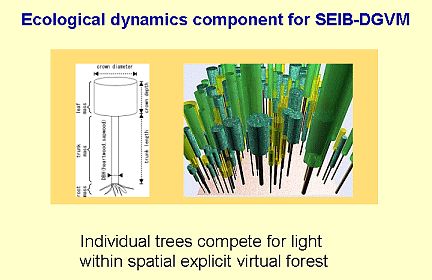
While climatic conditions primary determine the distribution and functioning of plant ecosystems, plant ecosystems also affect the climate, particularly through evapotranspiration, albedo, carbon cycle, and roughness of land surface. The degree, the sign (negative or positive), and the geographical distribution of the vegetation feedbacks on climate will all play a role in determining the final state of climate and final state of distribution and functioning of terrestrial ecosystems.

Thus, for providing reliable predictions for the changes of global climate, integrated terrestrial ecosystem models that include biogeochemical processes and vegetation dynamics would be required. However, a long time lag between climatic changes and changes in plant ecosystem adapting to the new climate are predicted, and it makes the situation more complicated. Because, such time lags are complex and diverse function of many factors (such as seed dispersal, establishment conditions/rate, and growth rate), and hence there are no reliable predictions at this moment.
To overcome this situation, Dynamic Global Vegetation Models (DGVMs) have been developped to simulate changes in ecosystem functions (ex: carbon and water flux) and ecosystem structures (ex: distribution and composition).

Among existing DGVMs, SEIB-DGVM only simulates local area interactions of individual trees within a spatial explicit virtual forest; several sample plots are placed at each grid box, and calculate growth, competition, and decay of each individual tree within the plots by considering light conditions of each tree surrounded by other trees.

This representation of plant dynamics has important advantages over previous DGVMs; (1) competition and succession dynamics are adequately represented, and hence response of ecosystem to climatic change would be reasonably predicted, (2) formation and recovery of forest gaps and subsequent carbon behavior can be included, and (3) information on the forest structures and dynamics can be directly applied for parameter estimation and validation without introducing many additional assumptions.
Currently, development of the SEIB-DGVM is almost completed. After verifying its reliability, we will incorporate it into the Kyousei2-Integrated-Synergic-Sytem-Model-of-Earth (KISSME), which simulates possible consequences of climate-ecosystem interactions on the future environment of the earth.
Presentation slide (open in a new window)